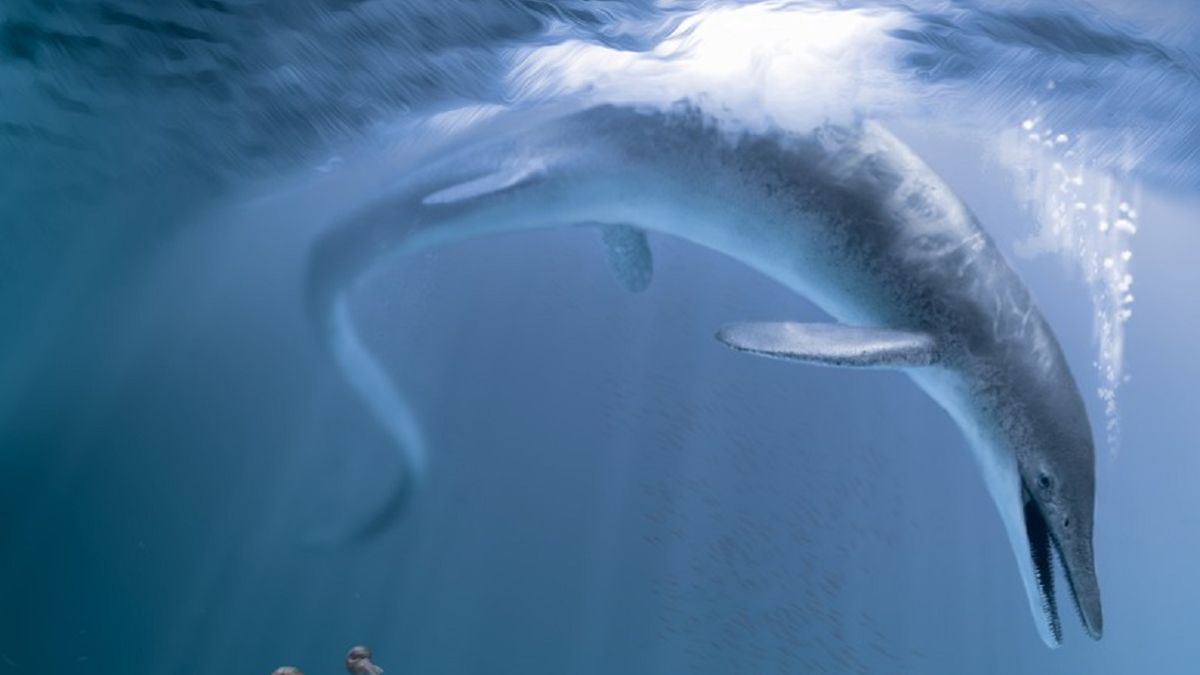A recently discovered huge skull, of two meters long that belongs to a species of giant Ichthyosaur, provides new details of the great growth of the first marine reptiles. This species, named as Cymbospondylus youngorum, is the oldest known among giant creatures.
Just as the dinosaurs were the ones who dominated on land, in the water were ichthyosaurs (which were not dinosaurs) and other reptiles those that, with a size similar to that of the first ones, had control of the seas and oceans. Their constantly evolving fins and shapes adapted for water, both in fish and whales, made them dominate almost the entire Age of Dinosaurs.
Earth’s first giant specimen
The skull was found in a rock unit known as Fossil Hill Member, located in the Augusta Mountains of Nevada. Along with it, well preserved, part of the spine, the shoulder and the front fin were found. After its study, it has been determined that it corresponds to the Middle Triassic (247.3-237 million years ago).
“This discovery and the results of our study highlight how different groups of marine tetrapods body sizes of epic proportions evolved under somewhat similar circumstances, but at strikingly different rates“, exposes the associate curator of marine mammals, Doctor Jorge Vélez-Juarbe, of the Los Angeles County Museum of Natural History.
With these data, as the museum explains, it is considered the first ichthyosaur case to reach epic proportions. And not only that, but thanks to its more than 17 meters long, it is the largest animal discovered to date in that time period, including terrestrial and marine species. Thus, it is the first giant creature to inhabit the Earth.
The mountain ranges of Nevada, for more than a century, have been a inexhaustible source of limestone, shale and siltstone fossils. These mountains, since 1902, have produced various species of ammonites, the shelled ancestors of some modern cephalopods, such as cuttlefish or octopus, and other marine reptiles.
Together they are known as Fossil Hill Fauna and they are considered prey and direct competitors of Cymbospondylus youngorum.
Strong competition to dominate the sea
This large ichthyosaur was present in the oceans about 246 million years ago, that is, little more than three million years after the emergence of the first, “a surprisingly short time to get so great”, says the Museum of Los Angeles.
Its elongated snout and the conical shape of its teeth suggest that its diet was based mainly on squid and fish. Its size, on the other hand, reveals that it could also have fed on other smaller marine reptiles.
Through a sophisticated computational model, the energy that runs through the food web of Fossil Hill Fauna has been verified. In this way the ancient environment was recreated, which reveals that marine food webs could support “more colossal” carnivorous ichthyosaurs.
Thus, there were them of different sizes and strategies to survive: from small dolphins to whales and giant sperm whales.

